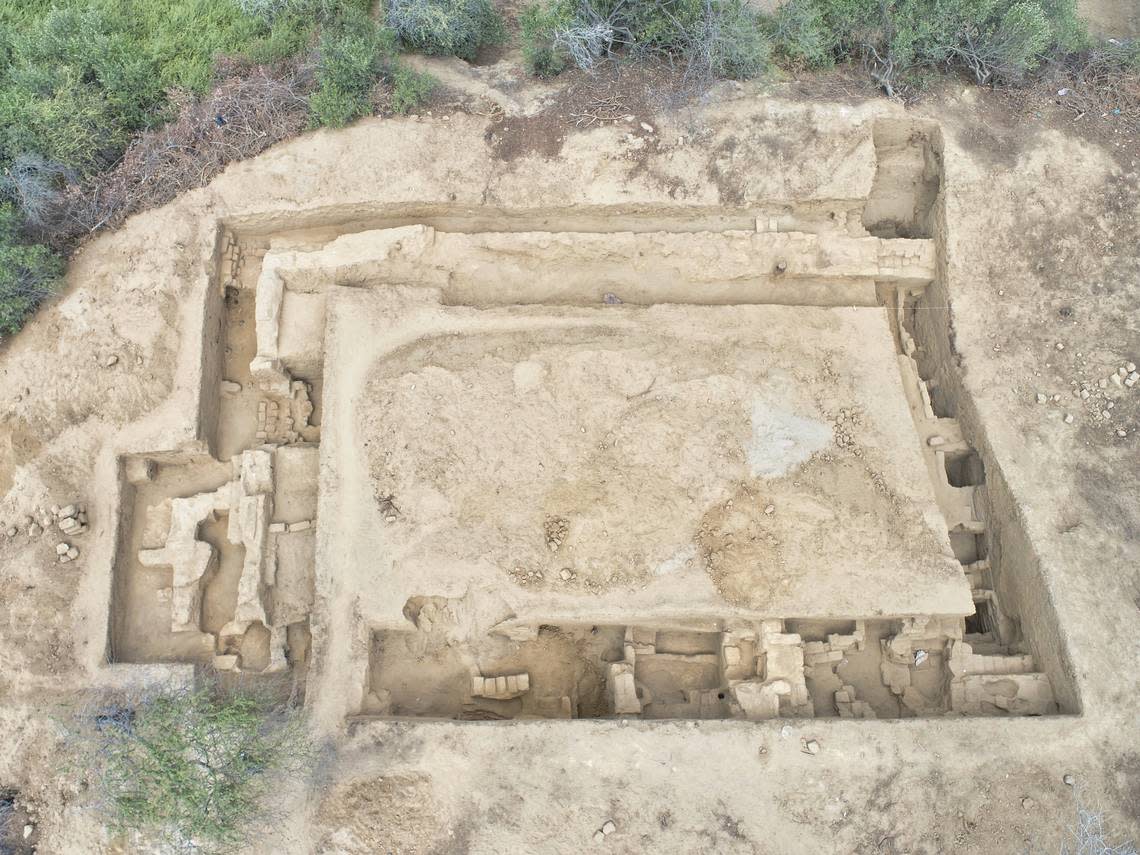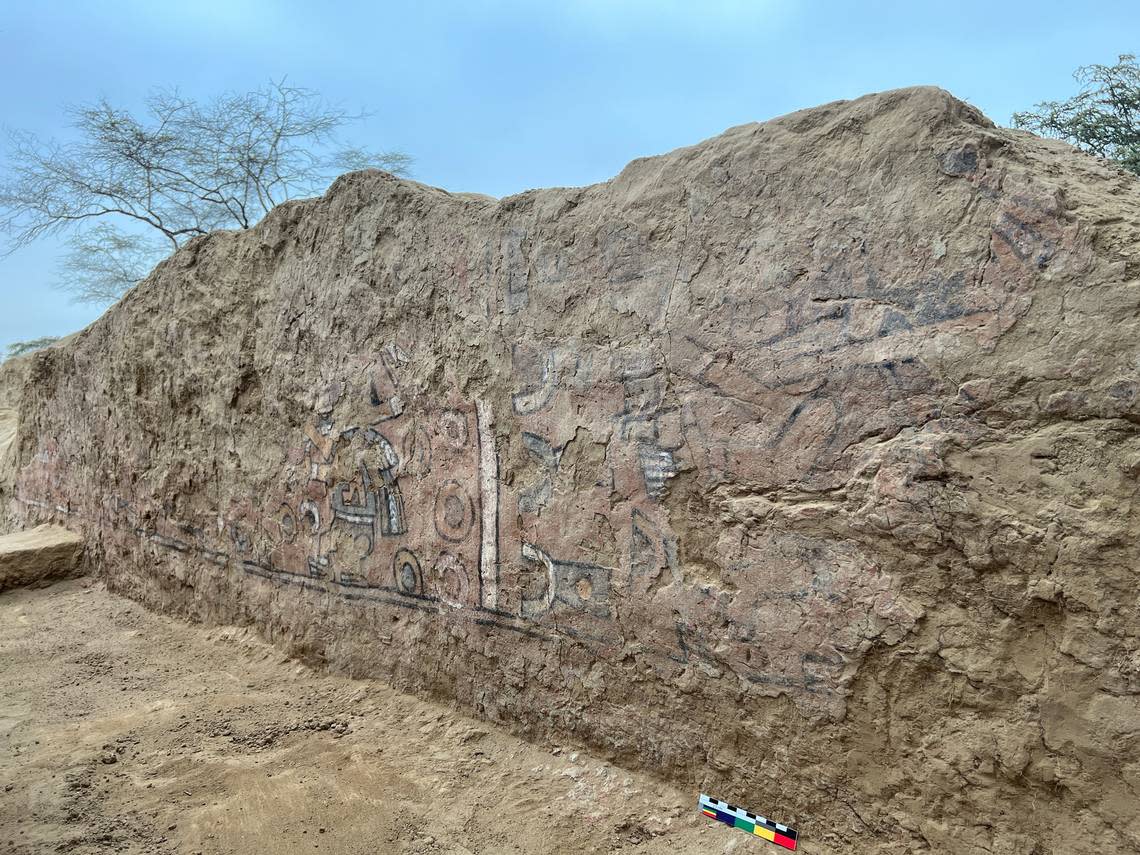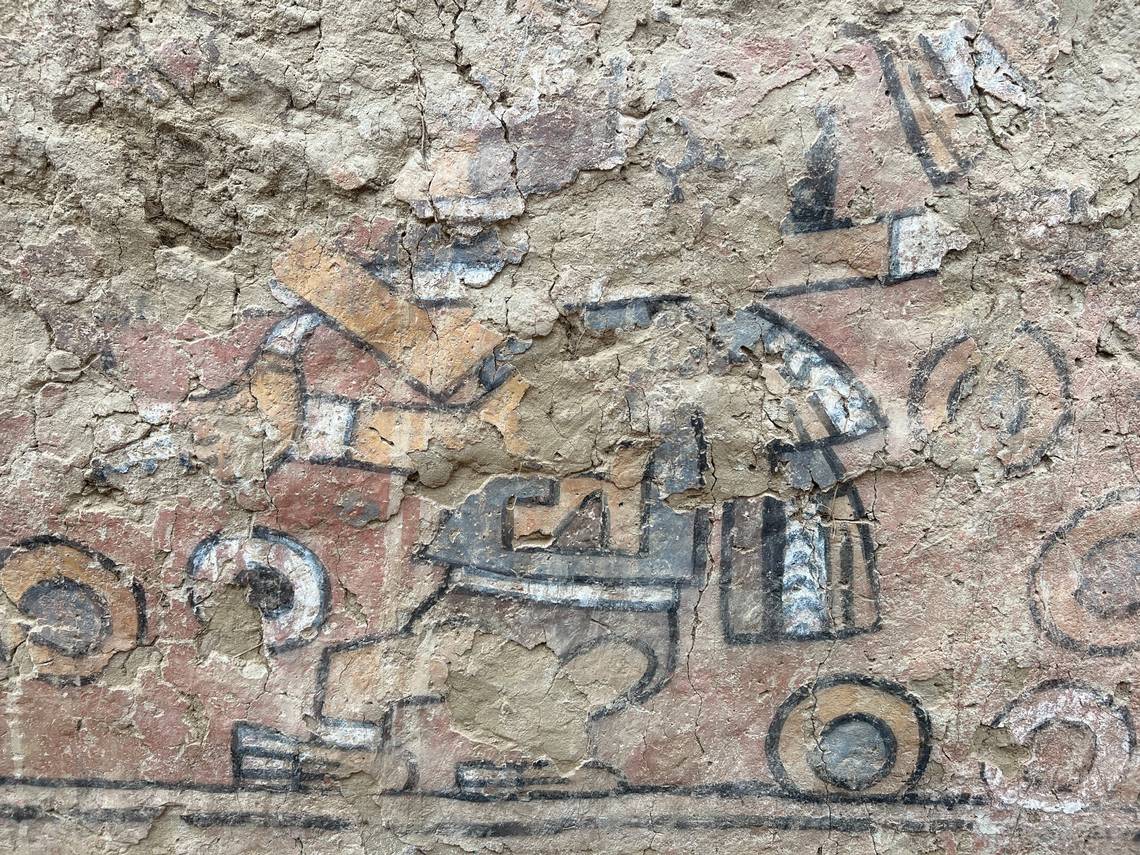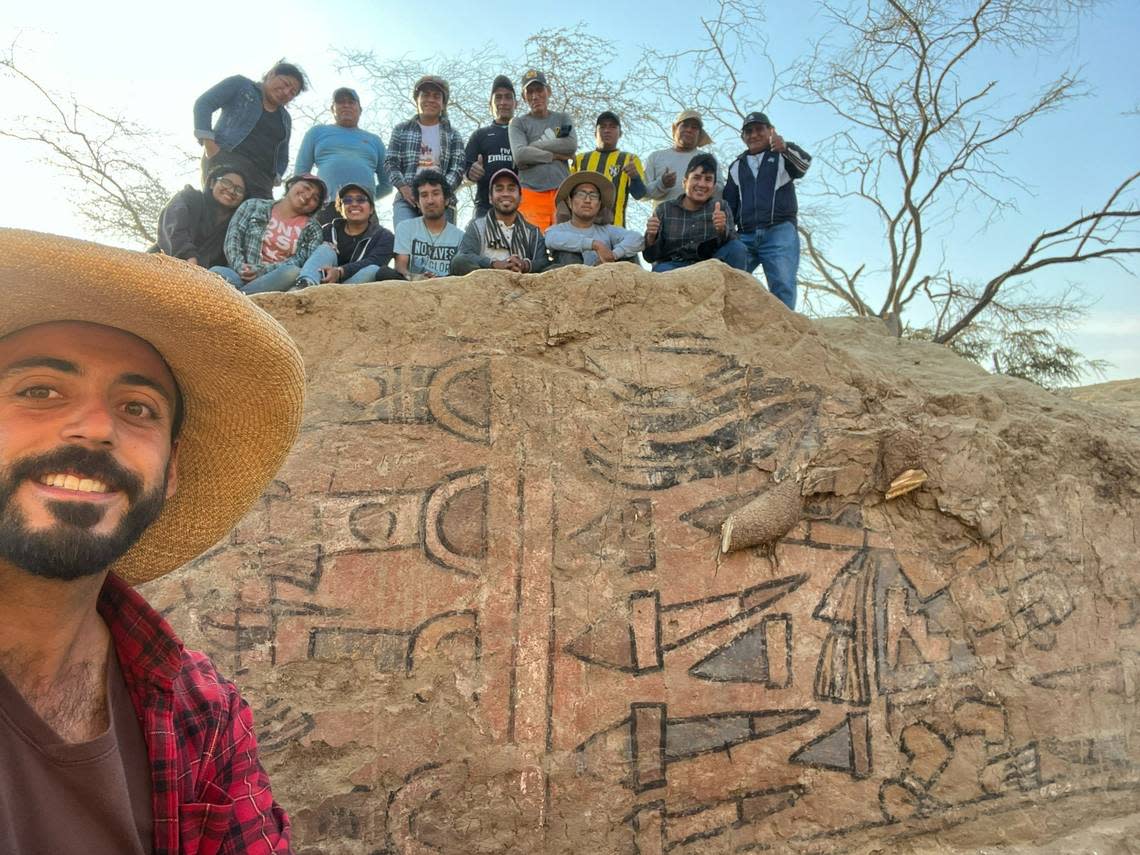Colorful ancient mural — believed to be destroyed by looters — rediscovered in Peru
Black and white photographs, field notes and local legends were once all that was left — and all there would ever be — of an ancient mural found and lost a century ago in Peru. Now, archaeologists rediscovered the long-lost mural.
Tomb-raiding looters found the 100-foot-long ancient mural, the Huaca Pintada, in 1916 while digging for buried treasures near Illimo, La República, a Peruvian newspaper, reported. Local authorities, however, prevented the looters from raiding the site. In response, the looters destroyed the mural — or so everyone thought.
All that remained of the Huaca Pintada were black and white photographs taken in 1916 by Hans Heinrich Brüning, a German ethnographer living in Peru at the time, The Guardian reported.
The photographs, field notes and local legends about the mural persisted for years, Richard Schaedel, professor of anthropology at the University of Texas at Austin, wrote in a 1978 paper on the mural. Excavations in the mid-1900s found no traces of the mural.
“Everyone thought that (Huaca Pintada) was long gone and that we would not be able to see it again,” Sâm Ghavami, a Swiss archaeologist with the University of Fribourg, told McClatchy News on Sunday, Nov. 27. Ghavami heard of the “lost mural” and began investigating, hoping to definitively prove whether any trace of the mural survived.

The site Ghavami planned to excavate was private land, and getting access from the family took two years, he told The Guardian. The COVID-19 pandemic further stalled the Swiss-Peruvian team’s excavation.
The wait was worth it when Ghavami’s team uncovered the remains of the mural wall on Oct. 11, La República reported. They found the portions of the mural photographed in 1916 and another 30 feet of the painting, The Guardian reported.
“The first time we saw the huge wall, it was by just scratching the sand,” Ghavami told The Guardian. “We could see the walls were unexcavated.”
Bringing the mural back to light took “a lot of work,” Ghavami told the outlet. “No one could see its monumentality when it was covered by trees. When that was cleared away, people start to see it in a new way.”

The massive multicolored mural was created by the Lambayeque culture of northern Peru between 600 and 750 A.D. and had elements from an older indigenous culture of the Mochica, Schaedel wrote in his study.
The yellow, red, blue, white and black of the mural remain vibrant though slightly worn in some sections, photos show. The mural’s mythical scene shows a now-gone central figure surrounded by panels of processional figures walking it, Schaedel reported in 1978.

The mural is “one of the most complex” and “atypical” murals from precolombian Peru, Ghavami explained. Its meaning has remained ambiguous for over a century, but Ghavami hopes the rediscovery will provide more context to the painting and allow researchers to “interpret its meaning and understand its function.”

Illimo is about 500 miles northwest of Lima.
Google Translate was used to translate the article from La República.
500-year-old mural linked to Aztec god found under layers of paint in Mexico convent
Underwater salt kitchens reveal how ancient Mayans worked from home 1,300 years ago
Gold-tongued mummies found in 2,000-year-old cemetery in Egypt, archaeologists say
